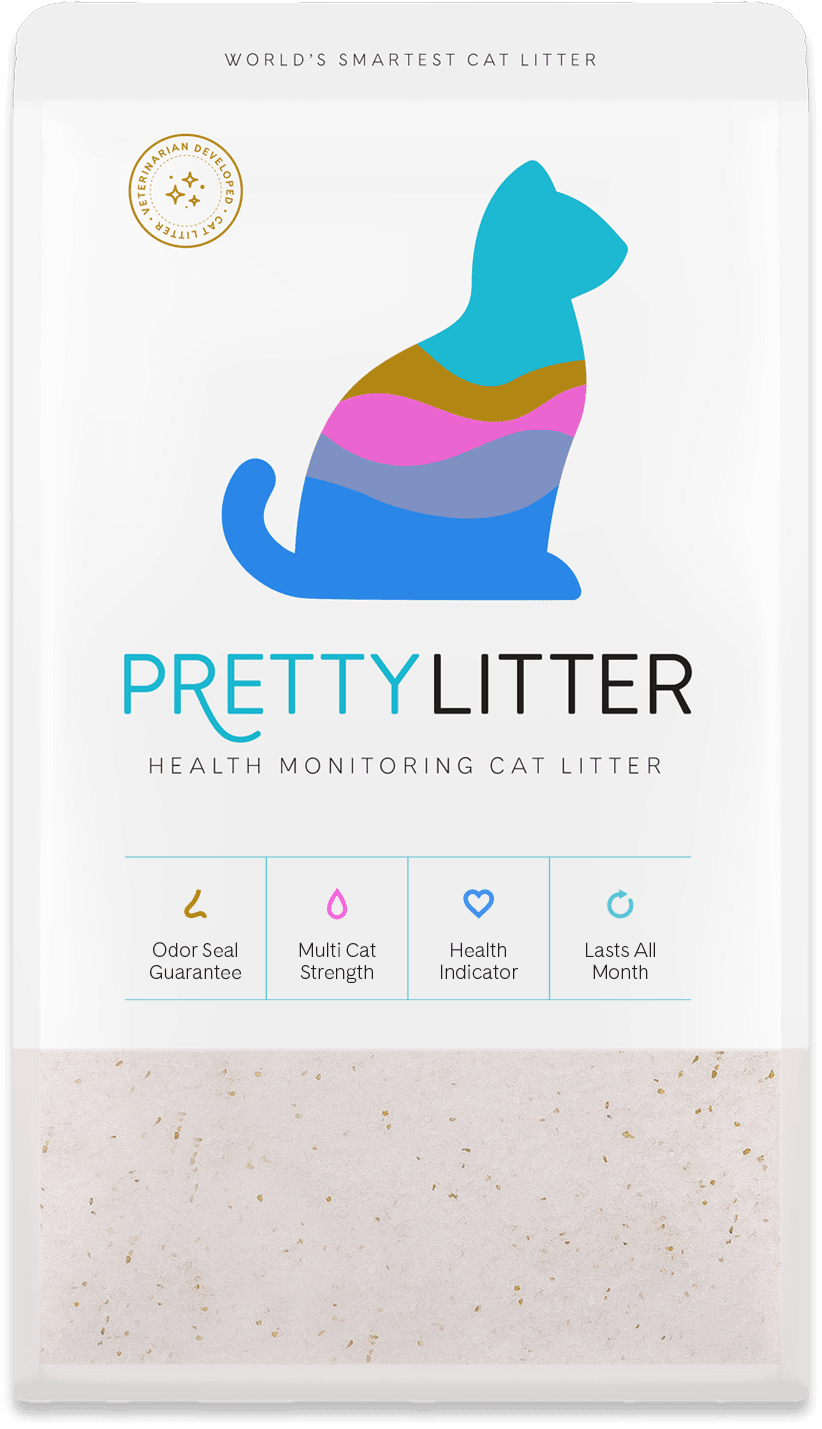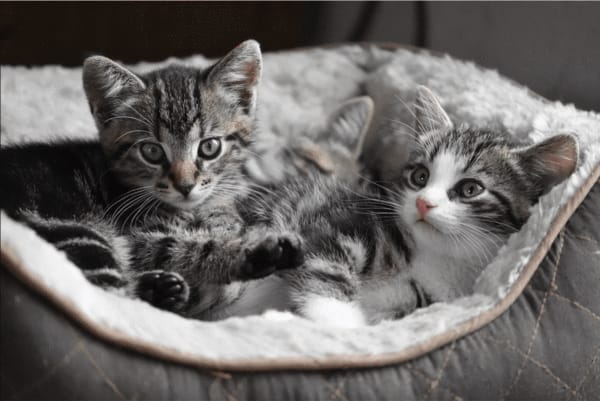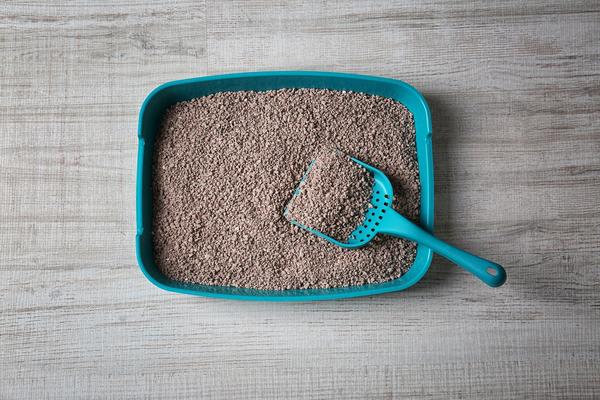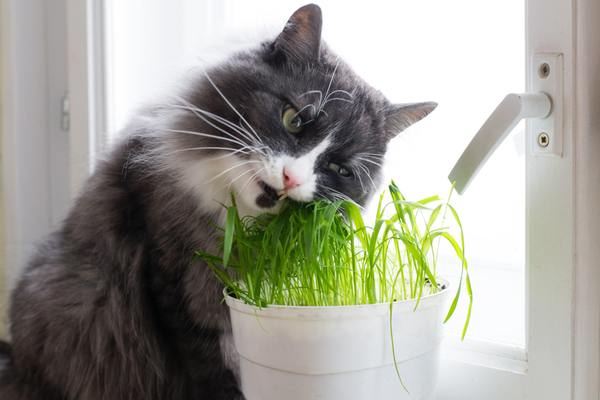March 7, 2025 |8 min read
How Do Kittens Know How to Use The Litter Box?

Written by

It’s almost magical how kittens seem to instinctively know what to do when they encounter a litter box. Unlike puppies, which require extensive potty training, kittens often take to the litter box with minimal guidance. But how do kittens know to use the litter box? Is it purely instinct, or do they need a little encouragement?
Understanding how kittens develop litter box habits can make training smoother and help prevent accidents. Whether you’re welcoming a new kitten into your home or simply curious about feline behavior, this guide will walk you through how kittens learn, when they’re ready, and how to set them up for success.
How Kittens Learn to Use the Litter Box
Kittens aren’t born with the ability to use a litter box. They pick up this behavior quickly thanks to a combination of natural instincts and social learning.
The Role of Instincts in Litter Box Use
Cats have a deep-rooted natural instinct to eliminate in soft, sandy areas where they can bury their waste.1 This behavior traces back to their wild ancestors, who covered their scent to avoid detection by predators. Even young kittens display this instinct, making a litter box the perfect substitute for an outdoor environment.
When a kitten feels the texture of litter under their paws, they’ll often instinctively dig, eliminate, and cover their waste—all without much guidance. However, while instincts play a role, they’re not always enough.
Learning from Mother Cats
Mother cats provide essential guidance in the first few weeks of a kitten’s life, including litter box habits. Kittens observe their mother using the litter box and mimic her behavior. If a mother cat demonstrates proper litter box habits, her kittens will naturally follow her lead.
For orphaned kittens or those separated too early from their mother, human caregivers must step in to teach and reinforce good litter box habits.
Cat Litter That Prioritizes Their
Health & Your Happiness.
for 20% Off + a FREE Catnip Toy
When Should Kittens Start Using the Litter Box?
Not all kittens start using the litter box at the same time, but most follow a general timeline based on their development. But, how do kittens know to use a litter box at the right age?
The Right Age for Litter Box Training
Kittens develop control over their bladder and bowels between three and four weeks old.2 This is the ideal time to introduce a cat litter box. Before this stage, a mother cat stimulates elimination by licking her kittens’ bellies. Once a kitty gains independence, they begin seeking out a proper place to eliminate, and this is when kittens start using the litter box.
By eight weeks old, most kittens are fully litter trained, provided they’ve had consistent access to a clean, well-placed litter box.
Tips for Introducing Kittens to the Litter Box
Successful litter training starts with setting up the right environment. With the right setup, most kittens take to the litter box quickly and naturally. Here’s how to help kittens feel comfortable with their new bathroom routine:
- Choose a small, shallow litter box: A low-sided box makes it easy for kittens to climb in and out.
- Pick a soft, fine-textured litter: Kittens may be sensitive to coarse litter, so choose a gentle litter that feels comfortable on their paws.
- Place the litter box in a quiet, accessible area: Avoid loud or high-traffic areas, as kittens prefer a peaceful spot for elimination.
- Encourage litter box use after meals and naps: Gently place your kitten in the litter box during times when they’re likely to poop or pee.
- Avoid scolding for accidents: Positive reinforcement, such as gentle praise, helps reinforce good habits.
Common Challenges in Litter Box Training Kittens
Even though kittens typically learn fast, some may experience roadblocks in their training. If your kitten is avoiding the litter box, there’s usually a reason behind it. Some litter box training mistakes can discourage a kitten from using the box. Here are some of the issues and how to fix the issues when you train your kitten:
- The box is too big or too deep: If the litter box is difficult to climb into, a kitten may avoid using it. Start with a small, shallow box.
- Wrong litter type: Some kittens dislike strong-smelling or rough-textured litter. Opt for a soft, fragrance-free option.3
- Not enough litter boxes: If you have multiple kittens, one litter box may not be enough. The rule of thumb is one box per kitten plus one extra.
- Litter box placement is inconvenient: If the box is in a hard-to-reach location, kittens may poop or pee elsewhere. Make sure the box is easily accessible.
- Not cleaning the box often enough: A dirty litter box can deter kittens. Scoop daily and do a full litter change as needed.
Choosing the Right Litter for Kittens
The type of litter you choose plays a significant role in your kitten’s litter training success and overall comfort. Kittens are naturally curious, and their first experiences with a litter box shape their habits for life. Choosing the right litter can determine whether your kitten feels comfortable using the box or starts avoiding it altogether.
Since kittens are still developing, they may be more sensitive to texture, scent, and dust levels than adult cats. But, how do you know how to choose cat litter that will work best for your situation? The best litter should be safe, easy to use, and inviting to your little feline friend.
Why PrettyLitter is a Great Choice for Kittens
PrettyLitter is designed with health, comfort, and ease of use in mind, making it an excellent option for kittens just starting their litter box training journey. Here’s why it’s kitten-friendly:
- Soft texture: The formula is gentle on tiny paws, making it easy for kittens to dig, bury waste, and feel comfortable using the litter box.
- Low maintenance: PrettyLitter helps cat parents keep the litter box cleaner with minimal effort, reducing the need for frequent litter changes.
- Advanced odor control: The formula is made with advanced odor control, keeping the litter box fresh and encouraging kittens to use it regularly.
- Color-changing crystals: PrettyLitter helps monitor your kitten’s urinary health by monitoring potential issues early, giving pet parents peace of mind.
By choosing PrettyLitter, you’re providing your kitten with a comfortable, hygienic, and easy-to-maintain litter box experience, setting them up for a lifetime of healthy litter habits.

Setting Your Kitten Up for Success
Training a kitten to use the litter box is a straightforward yet essential part of cat care. With the right guidance, environment, and litter, most kittens naturally develop good habits.
By choosing a high-quality litter like PrettyLitter, maintaining a clean litter box, and understanding your kitten’s needs, you’ll ensure a smooth and stress-free transition into their new home. Ready to start litter box training? Get started with PrettyLitter today.
Sources:
- 441 Animal Hospital Boca. Why Do Cats Bury Their Poop?. https://441animalhospitalboca.com/blog/cats-bury-their-poop/
- PetMD. Kitten Constipation. https://www.petmd.com/cat/conditions/digestive/kitten-constipation
- PetMD. What Smells Do Cats Hate? 15 Scents Cats Dislike. https://www.petmd.com/cat/general-health/what-smells-do-cats-hate







